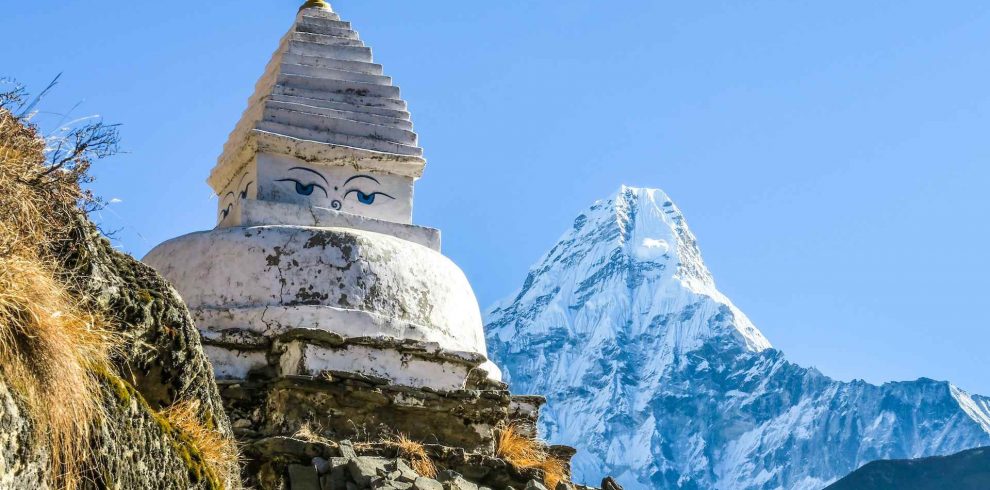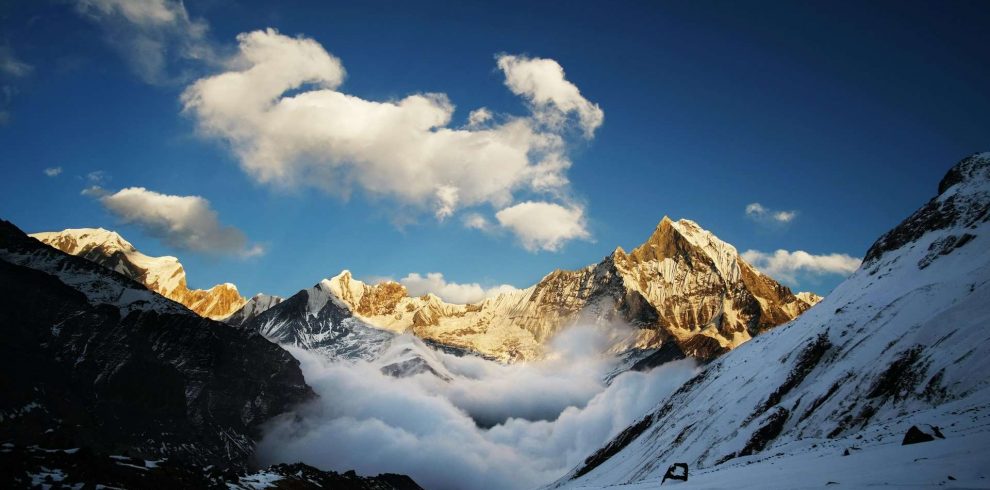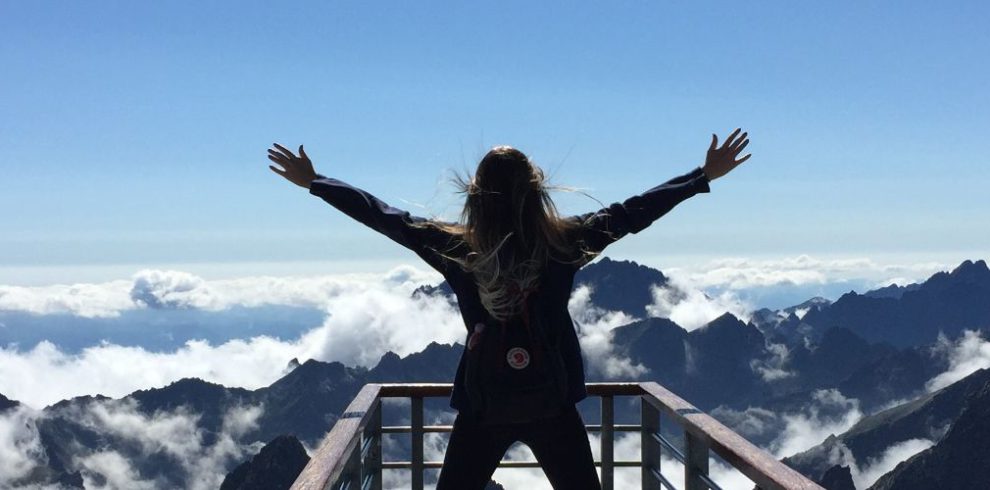Overview
The Mardi Himal Trek is a hidden gem located just east of the Annapurna Base Camp route. Not many trekkers visit Mardi Himal’s Base Camp. Mount Mardi, surrounded by the massive Annapurna massifs, is next to the breathtaking Mt. Fishtail (6993m).
Despite only reaching a height of 5587 meters, many people find this mountain to be beautiful and captivating. A breathtaking journey via the Annapurna Conservation Area is required to reach the foot of Mount Mardi.
The trail weaves through vintage rhododendron forests on narrow trails, culminating in a climb of around 3,300 meters. With breathtaking views of the Mardi Himal, Machhapuchhre, Annapurna South, and Hiunchuli, the scenery changes dramatically at this point.
For individuals who are eager to walk in less crowded areas of Nepal, the Mardi Himal Trek is ideal. This trek is ideal for people seeking a quick walk, cultural experiences, and stunning mountain views. There are simple guesthouses and homestays along the path, and the walk is even more thrilling in the winter when it’s covered in snow.
This journey is a hidden gem that combines trekking across rivers and hills, viewing wildlife in lush forests, and basking in breathtaking mountain views all in one. Follow the narrow, little pathways through the forests until you emerge from them, and you are rewarded with breathtaking views of Machhapuchre, Annapurna South, and Mardi Himal from the Badal Danda.
Thus, Mardi Himal Trek is a short trek in Nepal’s Annapurna region that offers accommodations in teahouses (lodges), authentic local cuisine, wonderful hill and mountain scenery, and breathtaking views of the massive Himalayan peaks, including Annapurna, Machhapuchre, Hiunchuli, and Mardi Himal.
Best Time To Go
A fantastic and secure adventure depends on choosing the right time to start the Mardi Base Camp Trek. Let’s look at the best times to travel, taking into account the pros and cons of each season.
Spring (March to May)
For the trek, the climate is ideal. It’s a clear, blue sky. There are no obstructions to the views of the mountains. Rhododendron blossoms are vibrant and abundant in forests. This month is when you may experience the aroma of many flowers when trekking up to the Mardi Himal.
The maximum temperature can reach 20 degrees. But during the day, the average temperature is about 17 degrees. It’s chilly at night and in the early mornings but not freezing.
Summer/Monsoon (June to August)
The Mardi Himal gets warmer in June. August is when summer ends. In Nepal, summertime brings with it regular and intense monsoon rains. In the monsoon season, the vistas could be hazy. The sky could be obscured by ominous clouds, and the mountain view could be ruined by torrential rain.
The path is slippery and wet, so you may encounter some challenges when trying to get to the Mardi Himal Base Camp. During the monsoon, the typical temperature varies from 10 to 23 degrees. The temperature decreases by five to ten degrees following a night or morning of rainfall.
Fall / Autumn (September to November)
The greatest season for trekking in the Mardi Himal is in the autumn. The months of September, October, and November are when autumn occurs. In Nepal, this is one of the most popular times of year for trekking.
Clear and more consistent weather remains in sight. The chances of rain are minimal. However, there’s a potential that if you walk in early September, you won’t see much rain. The daytime high is approximately 20 degrees Celsius. It is close to five degrees at night.
Although the trail is busier than it is in the spring, it remains less crowded than other treks in the Nepalese Himalayas.
Winter (December to February)
In the Himalayas, winter means a freezing temperature. The Mardi Himal has winter from December to February. It’s a dry weather day. The pathways and the mountains are blanketed in piles of snow. The wintertime brings a five-degree fall in temperature.
During this season, the surroundings become extremely cold and dry. For this reason, the majority of visitors do not favor trekking the Mardi Himal during the winter. In the winter months, the teahouses and lodges in the Annapurna region might not be fully occupied. This means that it should be easy for you to find the ideal hotel.
Highlights of Mardi Himal Trek
- Good panoramas of the Himalayas, including Machhapuchhre, Annapurna South, Dhaulagiri, Annapurna I, and others.
- Explore the recently emerged, less busy trekking sections in the Annapurna Region.
- Discover village peoples' customs and ways of living.
- Traverse through the dense forest leading to Forest Camp.
- Enjoy rhododendrons blooming throughout February, March, and April.







